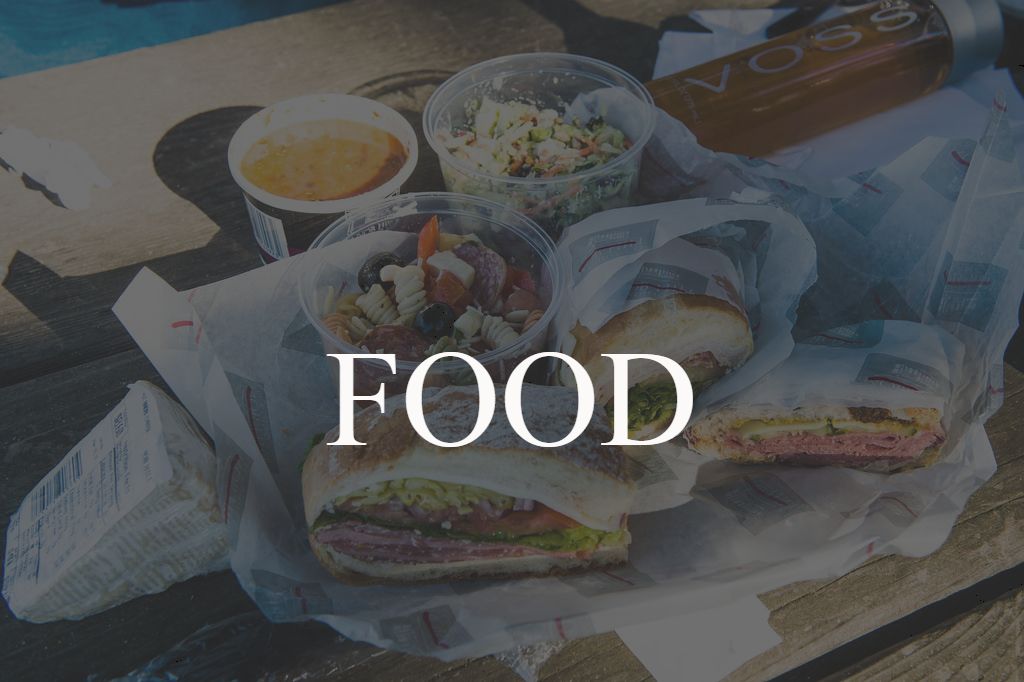Top 10 Wine Terms For Beginners:
A person may know the difference between a corkscrew and a wine key, but that doesn't make them an expert in all things vino. Even if you don't plan on becoming a wine connoisseur, you'll find that learning a few of the most basic wine terms will help you spark up interesting conversations at business dinners, social events or even a trip to wine country!
Here are the top 10 wine terms to know if you are just getting started.
1. Varietal:
In order to be classified as a varietal, 75 percent of the wine must come from one single type of grape. It's always listed on the label, and it's usually what you will ask for when purchasing wine in a store or restaurant. Popular red wine varietals include Cabernet Sauvignon, Merlot, Pinot Noir, Shiraz/Syrah, Zinfandel and the up-and-coming Spanish favorite, Tempranillo. Popular white varietals include Sauvignon Blanc, Pinot Grigio, Pinot Gris, Chardonnay and Riesling.
2. Blend:
Wines that are made using a variety of grapes are known as blends. Vintners often produce blends to bring together specific attributes of different grapes or just to make a wine that's a bit more complex than a varietal. Bordeaux wine is actually a blend of Merlot and Cabernet Sauvignon, and Champagne usually is a marriage of Pinot Noir, pinot Meunier and Chardonnay grapes. Other popular blends include Rioja, Chianti and Port.
3. Appellation:
The geographic region the grapes were grown in that make up a wine is known as its appellation. In the U.S., 85 percent of the grapes in the wine must come from the same region in order for it to have an appellation designation, though other countries have different sets of guidelines. The most popular U.S. wine appellations (known as A-V-A) are Napa Valley, Sonoma, New York's Finger Lakes and Canandaigua regions and of course, the Willamette Valley.
4. Vintage:
Simply put, vintage is the year the grapes used in making a wine were grown and harvested. Anyone who has a backyard vegetable garden knows that the season's weather has the greatest impact on the quality of the harvest, and the same is true of grapes. If you're an avid Two-Buck Chuck fan, you probably won't need to worry about a wine's vintage, but you should be aware of it when exploring that fancy new restaurant's wine menu. If the grapes used to make a wine were grown in an area where the weather is relatively stable, such as California, Australia or Spain, you're probably safe. But if you opt for wines from France's Burgundy and Bordeaux regions or the Willamette Valley, you might want to investigate which vintages are the best choice.
5. Bottle Age:
Bottle age is exactly what it sounds like—the number of years a wine has been aged in its bottle. If a "wine expert" in a store tries to sell you a $40 bottle of Cabernet Sauvignon claiming that it's been aged for 15 years, don't buy it. Most affordable wines are meant to be drunk within five years and don't benefit at all from aging. So unless you're splurging $100+ on a first-growth wine from Bordeaux, which needs at least 30 years to age properly, or you're hosting a wine tasting event, bottle age is something you generally won't have to worry about.
6. Sommelier:
No matter what restaurant you're dining in, your guests will look at you with newfound respect when you ask if the restaurant has a sommelier. These wine stewards are the go-to expert in high-end restaurants when choosing what wines to pair with the food you order.
7. Aeration:
Most red wines and a few white wines need to "breathe" before consuming to open up their flavors. You can aerate wines by using a handy wine decanter or pouring them into wide-bodied red wine glasses and giving them 10 to 20 minutes before drinking. Most red wines will benefit from aeration before serving, particularly young reds and those that are high in tannins. White Burgundies and Bordeaux also benefit from aeration, thought they don't need quite as much time as their red counterparts.
8. Tannins:
If you've ever suffered from a headache after drinking your favorite Merlot, it may be that you are sensitive to tannins. Also known as polyphenols, tannins leech into the wine from the stems, skins and seeds of grapes as they soak after they're pressed. Since the skins and seeds are generally absent during the fermenting process of white wines, they almost always contain fewer tannins. Wines with a higher level of tannins make your mouth feel very dry, while that happens to a lesser extent with wines that contain fewer tannins.
9. Dry:
Wines with little or no residual sugar are known as dry wines. The term "dry" just means that the wine isn't sweet. Don't confuse this with the dry feel in your mouth after drinking a wine high in tannins, as they are two very different things. Red and white wines can be dry or high in tannins, but tannic wines are usually red wines and the term "dry" is generally applied to white wines.
10. Light/Medium/Full Bodied:
The body of a wine relates to its mouth feel. A full-bodied wine is an explosion of flavors and sensations in your mouth, while a light-bodied wine has an almost delicate mouth feel. As an example, you could say that skim milk is light-bodied, 2 percent milk has a medium body and whole milk is full-bodied.
A person may know the difference between a corkscrew and a wine key, but that doesn't make them an expert in all things vino. Even if you don't plan on becoming a wine connoisseur, you'll find that learning a few of the most basic wine terms will help you spark up interesting conversations at business dinners, social events or even a trip to wine country!
Here are the top 10 wine terms to know if you are just getting started.
1. Varietal:
In order to be classified as a varietal, 75 percent of the wine must come from one single type of grape. It's always listed on the label, and it's usually what you will ask for when purchasing wine in a store or restaurant. Popular red wine varietals include Cabernet Sauvignon, Merlot, Pinot Noir, Shiraz/Syrah, Zinfandel and the up-and-coming Spanish favorite, Tempranillo. Popular white varietals include Sauvignon Blanc, Pinot Grigio, Pinot Gris, Chardonnay and Riesling.
2. Blend:
Wines that are made using a variety of grapes are known as blends. Vintners often produce blends to bring together specific attributes of different grapes or just to make a wine that's a bit more complex than a varietal. Bordeaux wine is actually a blend of Merlot and Cabernet Sauvignon, and Champagne usually is a marriage of Pinot Noir, pinot Meunier and Chardonnay grapes. Other popular blends include Rioja, Chianti and Port.
3. Appellation:
The geographic region the grapes were grown in that make up a wine is known as its appellation. In the U.S., 85 percent of the grapes in the wine must come from the same region in order for it to have an appellation designation, though other countries have different sets of guidelines. The most popular U.S. wine appellations (known as A-V-A) are Napa Valley, Sonoma, New York's Finger Lakes and Canandaigua regions and of course, the Willamette Valley.
4. Vintage:
Simply put, vintage is the year the grapes used in making a wine were grown and harvested. Anyone who has a backyard vegetable garden knows that the season's weather has the greatest impact on the quality of the harvest, and the same is true of grapes. If you're an avid Two-Buck Chuck fan, you probably won't need to worry about a wine's vintage, but you should be aware of it when exploring that fancy new restaurant's wine menu. If the grapes used to make a wine were grown in an area where the weather is relatively stable, such as California, Australia or Spain, you're probably safe. But if you opt for wines from France's Burgundy and Bordeaux regions or the Willamette Valley, you might want to investigate which vintages are the best choice.
5. Bottle Age:
Bottle age is exactly what it sounds like—the number of years a wine has been aged in its bottle. If a "wine expert" in a store tries to sell you a $40 bottle of Cabernet Sauvignon claiming that it's been aged for 15 years, don't buy it. Most affordable wines are meant to be drunk within five years and don't benefit at all from aging. So unless you're splurging $100+ on a first-growth wine from Bordeaux, which needs at least 30 years to age properly, or you're hosting a wine tasting event, bottle age is something you generally won't have to worry about.
6. Sommelier:
No matter what restaurant you're dining in, your guests will look at you with newfound respect when you ask if the restaurant has a sommelier. These wine stewards are the go-to expert in high-end restaurants when choosing what wines to pair with the food you order.
7. Aeration:
Most red wines and a few white wines need to "breathe" before consuming to open up their flavors. You can aerate wines by using a handy wine decanter or pouring them into wide-bodied red wine glasses and giving them 10 to 20 minutes before drinking. Most red wines will benefit from aeration before serving, particularly young reds and those that are high in tannins. White Burgundies and Bordeaux also benefit from aeration, thought they don't need quite as much time as their red counterparts.
8. Tannins:
If you've ever suffered from a headache after drinking your favorite Merlot, it may be that you are sensitive to tannins. Also known as polyphenols, tannins leech into the wine from the stems, skins and seeds of grapes as they soak after they're pressed. Since the skins and seeds are generally absent during the fermenting process of white wines, they almost always contain fewer tannins. Wines with a higher level of tannins make your mouth feel very dry, while that happens to a lesser extent with wines that contain fewer tannins.
9. Dry:
Wines with little or no residual sugar are known as dry wines. The term "dry" just means that the wine isn't sweet. Don't confuse this with the dry feel in your mouth after drinking a wine high in tannins, as they are two very different things. Red and white wines can be dry or high in tannins, but tannic wines are usually red wines and the term "dry" is generally applied to white wines.
10. Light/Medium/Full Bodied:
The body of a wine relates to its mouth feel. A full-bodied wine is an explosion of flavors and sensations in your mouth, while a light-bodied wine has an almost delicate mouth feel. As an example, you could say that skim milk is light-bodied, 2 percent milk has a medium body and whole milk is full-bodied.















